Author Jennifer Grayson embedded herself in a training program for beginning farmers, then set out across the country meeting other first-time farmers to uncover how we could scale a new generation.
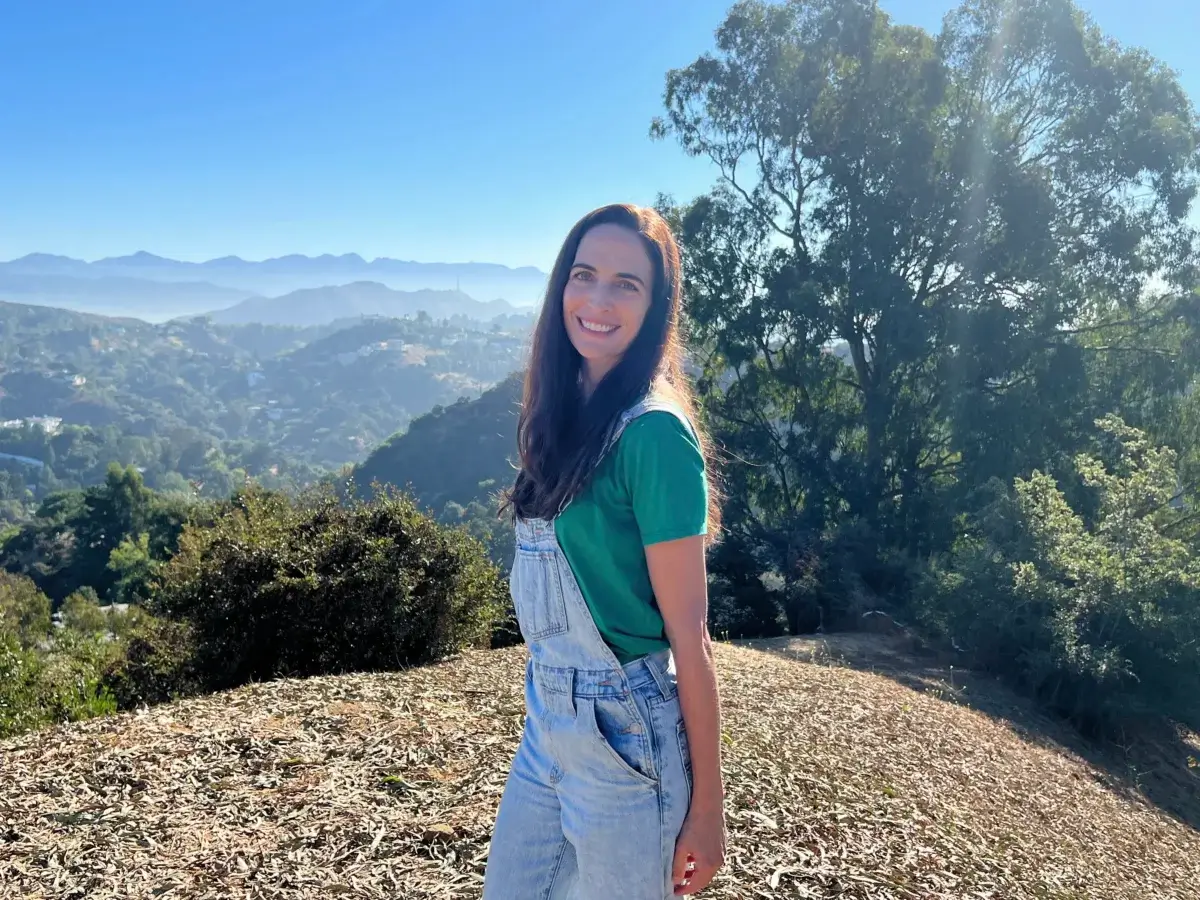
The following is an excerpt from A Call to Farms, by Jennifer Grayson, available now. The excerpt has been lightly edited for length and clarity.
Two years before the dawn of the COVID-19 pandemic, I was researching a book idea about rewilding—a subculture of the better-known land conservation movement where people pursue a preindustrial or even preagricultural, hunter-gatherer existence. My interviews included survivalists living on a tropical island, primitive skills enthusiasts creating forest schools and subsistence homesteaders.
I’ve lived in cities my entire adult life, so it doesn’t take a psychologist to unpack my personal attraction to the idea of backpedaling from the increasing overwhelm of life in the twenty-first century: the incessant infiltration of technology and media; social isolation and loneliness; disconnection from nature, especially its troubling impact on our kids; escalating global conflict; and accelerating natural disasters validating our fears that the endgame of climate change is not only inevitable but happening now.
Still, as time went on, I became a little weary of the doomsday pre-occupation. More importantly, I was unsure of its helpfulness. Everyone can feel the tumult of these times, but very few of us, myself included, have the wherewithal or the chutzpah to toss aside everything they’ve ever known and hunt and forage from a cabin in the woods.
Some of the solutions being touted in the world of rewilding were inspiring, but I wished for a doable purpose in the here and now; preferably one where I would feel more alive and useful than I did rhapsodizing in front of a computer.
I also had a concurrent realization: In my longing to reclaim the ways of the past, it was traditional food culture that most lit my fire. And so, six months into COVID lockdown in Los Angeles, my husband and I decided, “enough with the daydreaming,” and sold everything we owned and moved with our two young daughters to Central Oregon, where I serendipitously stumbled into the area’s local food movement and subsequently enrolled in a groundbreaking farmer training program. The immersive internship was centered around regenerative agriculture—a new (but actually ancestral) and holistic approach to growing food that restores soil and biodiversity and sequesters carbon in the ground.
I’ve covered the ills of our industrialized food system for more than a decade, so regenerative farming was a field I was closely following. High-profile books and documentaries were pointing to its promise while sounding the alarm on the finiteness of intensive agriculture—warning of vanishing groundwater and the world’s dwindling supply of usable topsoil. Yet, until I encountered the training program in Oregon, it never occurred to me to actually take matters into my own hands and consider small, sustainable farming as a viable career path.
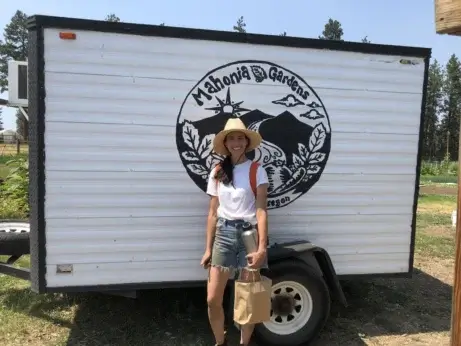
Author Jennifer Grayson at her first farmer training program.
A week into my first farm job, I realized it was the most joyful and fulfilling work I had ever experienced. After two months of being outside all day, nearly every day, I felt the best—both physically and mentally—that I ever had in my life. But the real transformation occurred as I began to meet and learn about the new and driven farmers, graziers and food activists emerging all over the country. They hadn’t grown up in farming families; they came from backgrounds vastly underrepresented in agriculture; and many of them were far younger than I was, not to mention decades younger than the average American farmer. I was awestruck by their intention and ingenuity. They hadn’t turned to this way of life as some back-to-the-land fantasy. They had chosen sustainable agriculture as a tactile way to affect environmental activism and food justice; for cultural reclamation; to reconnect to nature, food and community; to live aligned with their values; to do “something that means something.”
And during the environmental and societal reckoning of the pandemic—not to mention the collapse of the industrial food supply chain—the work of these regenerative farmers became more meaningful than ever before. They filled the void amid empty supermarket shelves and miles-long food lines and fed millions of Americans not just food but the most delicious food many of us had ever tasted. They witnessed hundreds of thousands of people needlessly dying of COVID due to diet-related disparities and pushed ahead for funding and food sovereignty. So I started to wonder: How could we scale a “greatest generation” of sustainable small farmers?
What would this country look like transformed by a vast network of resilient local food systems that restore the environment and ensure healthy, fresh food is accessible to all?
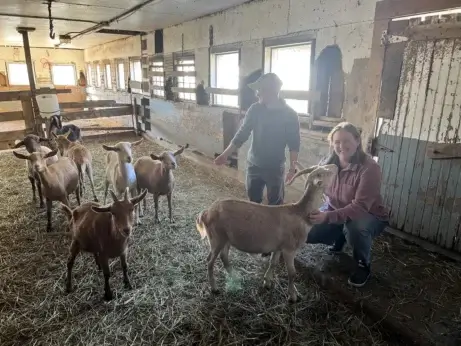
Archer Meier and Marlo Stein of Round Table Farm, a cheese and flower farm in Hardwick, Massachusetts. Photography via author.
These two questions launched me on the journey to write this book. But it was only later that I learned of their urgency. In the coming decade, 400 million acres of American farmland—nearly half of all farmland in the United States—will become available as the older generation of American farmers retires or dies. Meanwhile, the groundswell of new growers eager to steward that land are up against seemingly every obstacle: access to affordable land, access to capital, a livable income and the billionaires and corporations now grabbing farmland at a staggering pace.
And yet, there’s hope: Big Ag may be the norm in the United States, but small growers globally produce around a third of the world’s food on farms of five acres or less.
Mapping research shows up to 90 percent of Americans could be fed entirely with food raised within 100 miles of where they live. Project Regeneration highlights regenerative agriculture and other nature-based farming methods as critical strategies in the plan to reverse global warming. And the human power exists: The number of new, beginning and young farmers has been increasing for the past 10 years, a trend unparalleled in the last century.
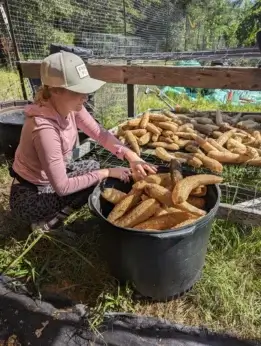
Alison Pierce of Common Joy, a sustainable luffa farm run with husband Brian Wheat in Charleston, South Carolina. Photography via author.
I came to farming as an outsider, and that’s exactly the point. Two hundred years ago, nearly all of us lived and worked on the land that fed us (although not all of our own free will). Even a hundred years ago, one-third of us did. Today, that number stands at one percent. Yet, right now, so many of us are yearning for something we can’t name, an intangible we don’t even realize has been lost. It’s our connection to our food, that most fundamental of human needs, and it is that which ties us to everything else.
These are the stories of a new, diverse generation of agrarians unfolding an alternate vision of the future, if only more of us would join the call.
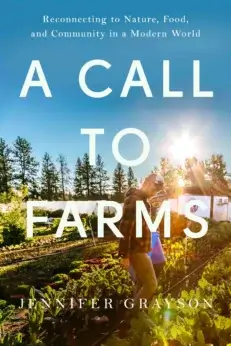



I am interested in the research that says 90% of Americans could be fed from food grown within 100 miles of them. Please send a link to that research. Thank you.
Though heartfelt Jennifer’s call to farm breaks no new ground. She is right that to re-establish robust, a locally-based food production that contributes significantly to the nation’s food supply, we have to make farming attractive and economically viable to the next generation of farmers. Perpetuating the agrarian ideal is a limiting way to do it. Trying to jump that period in history where we started pulling up fences and paving over farmland by expecting people to wander back to the good old days is not realistic. The woodlot that was used to grow firewood and lumber for building; the kitchen… Read more »